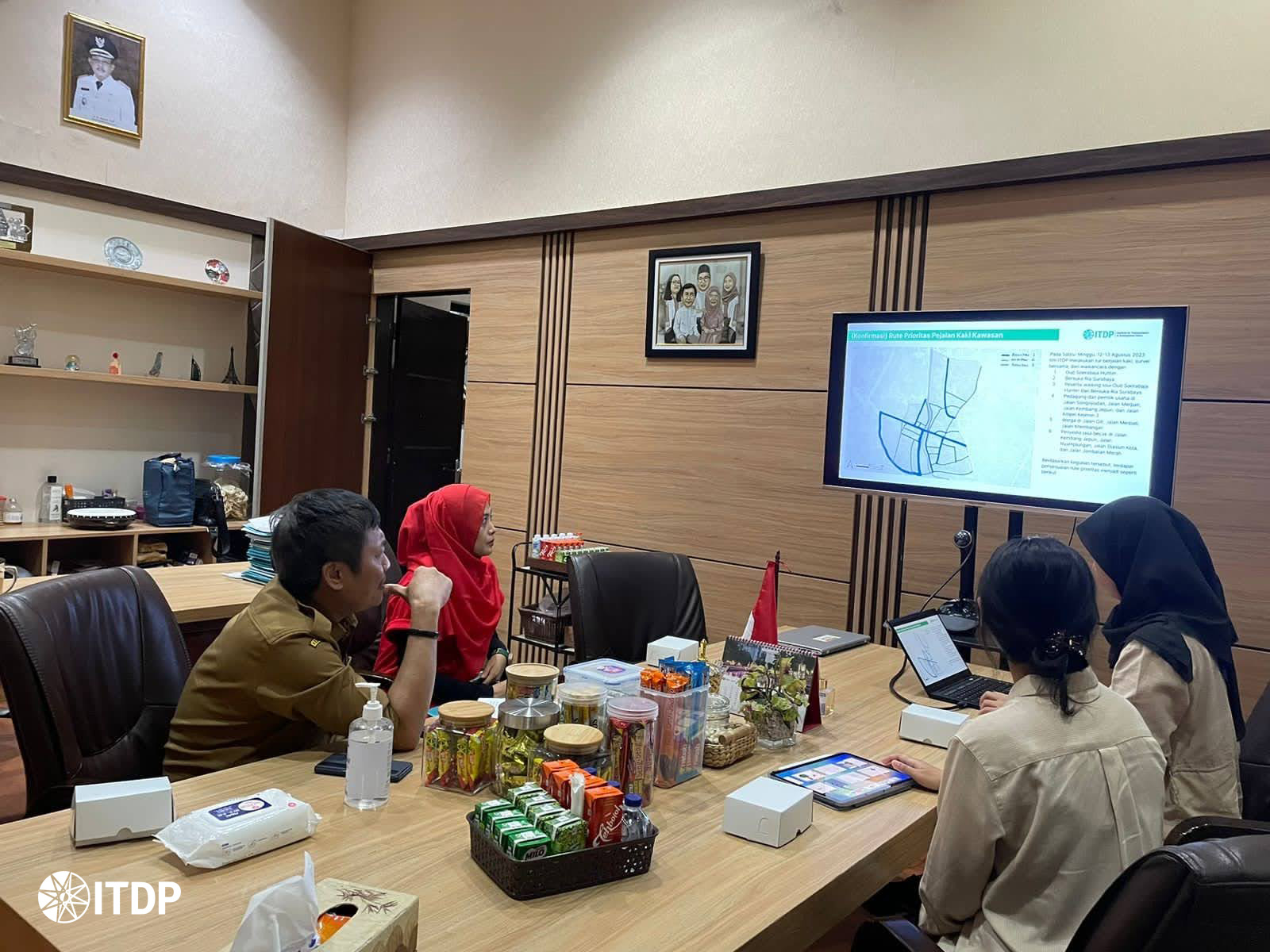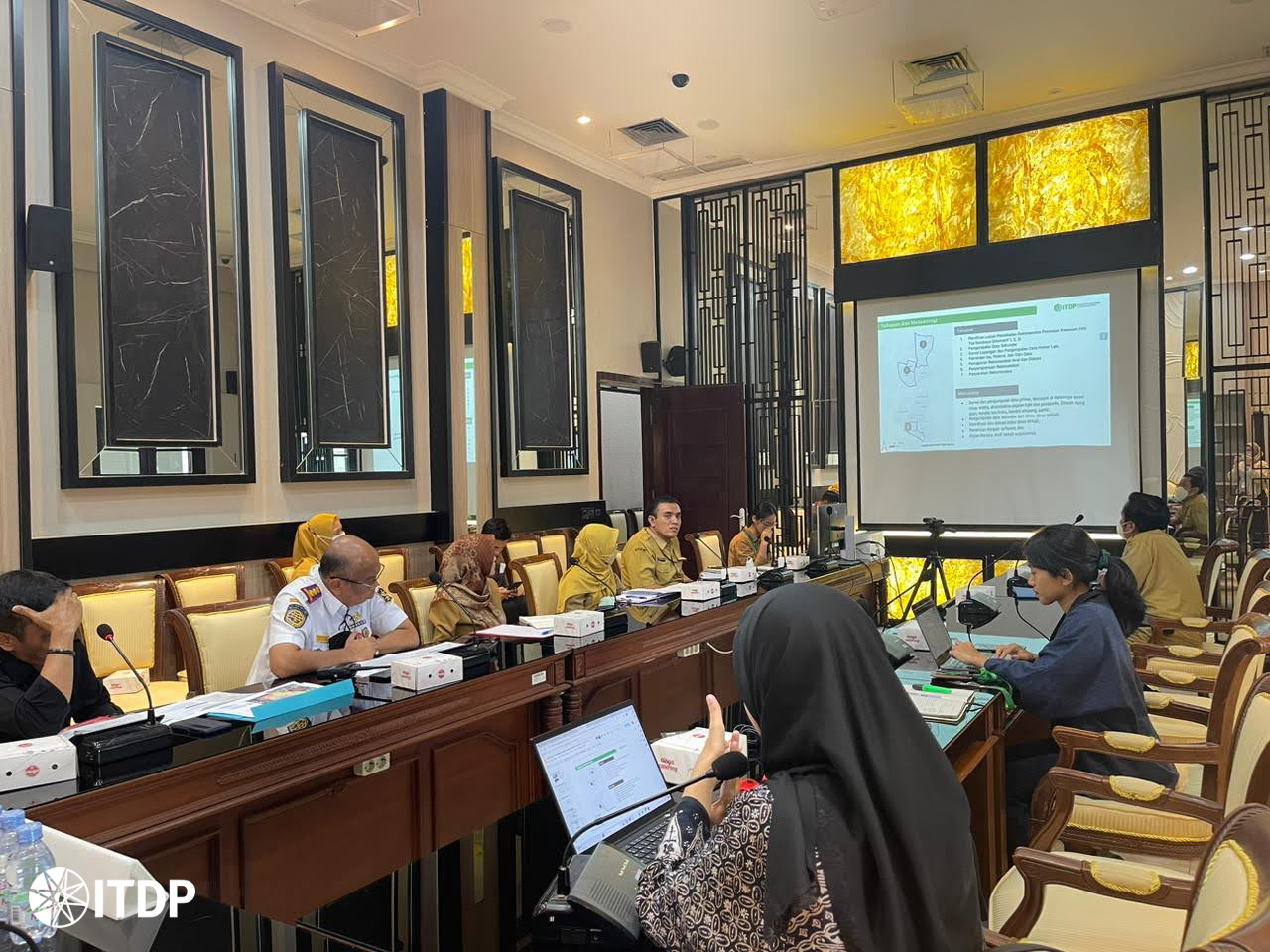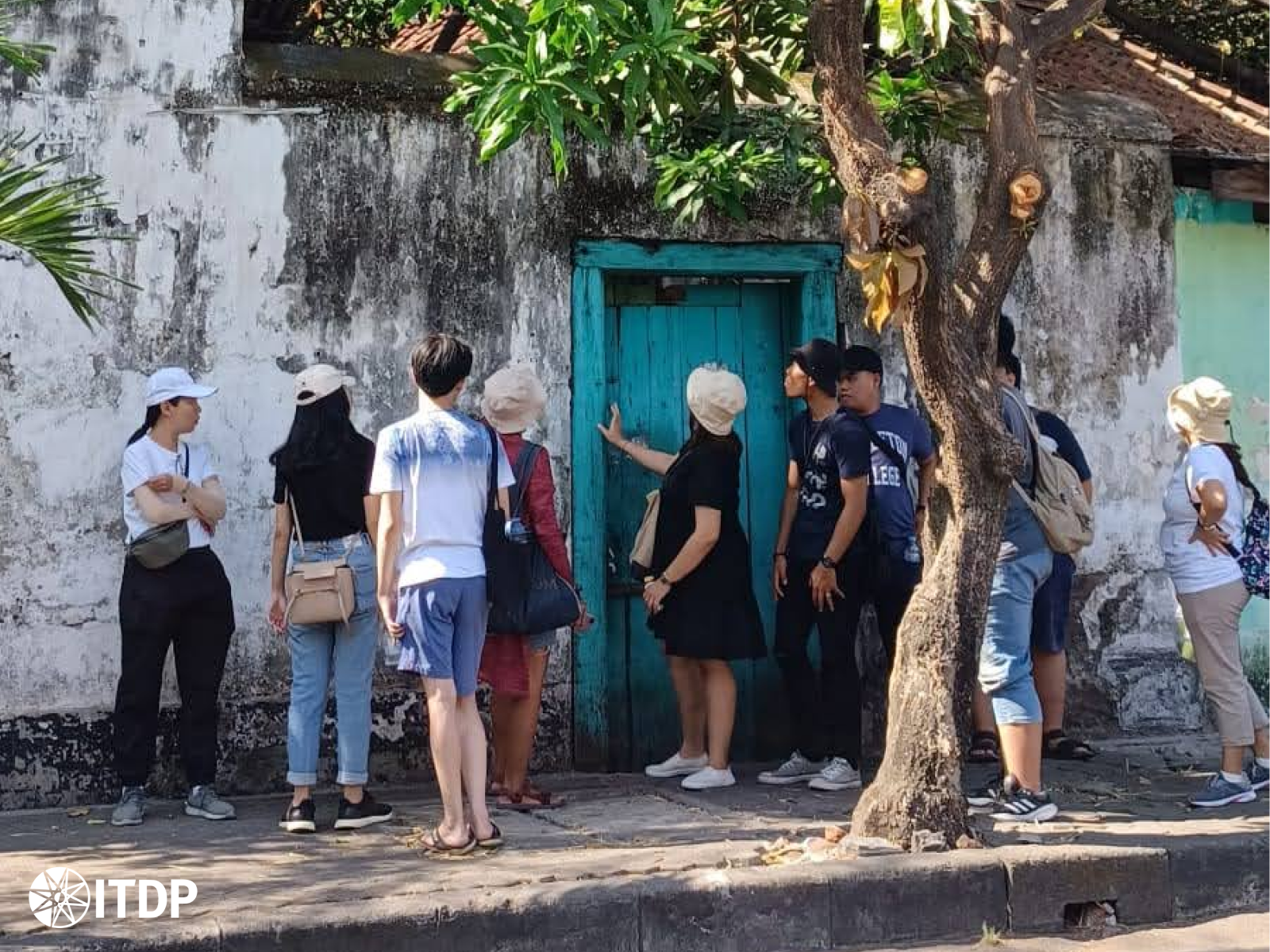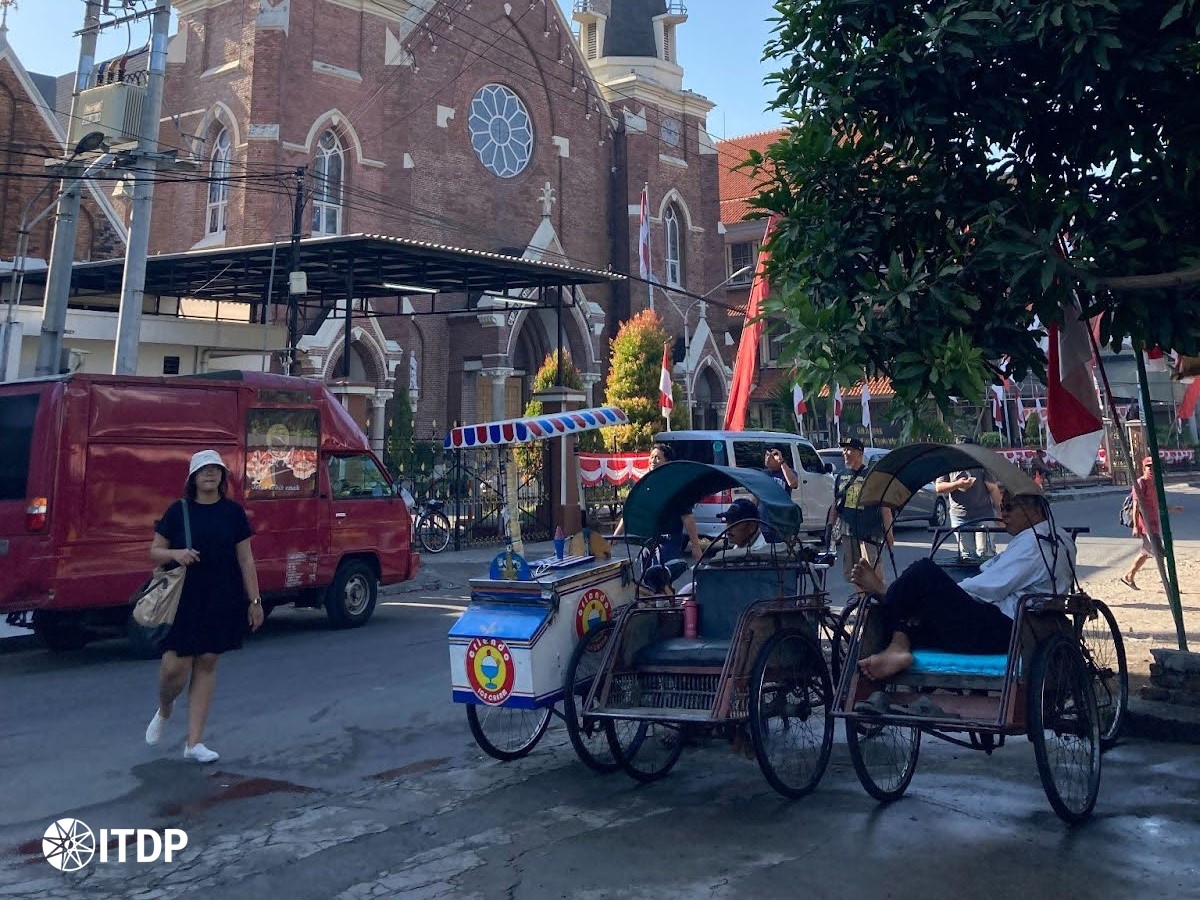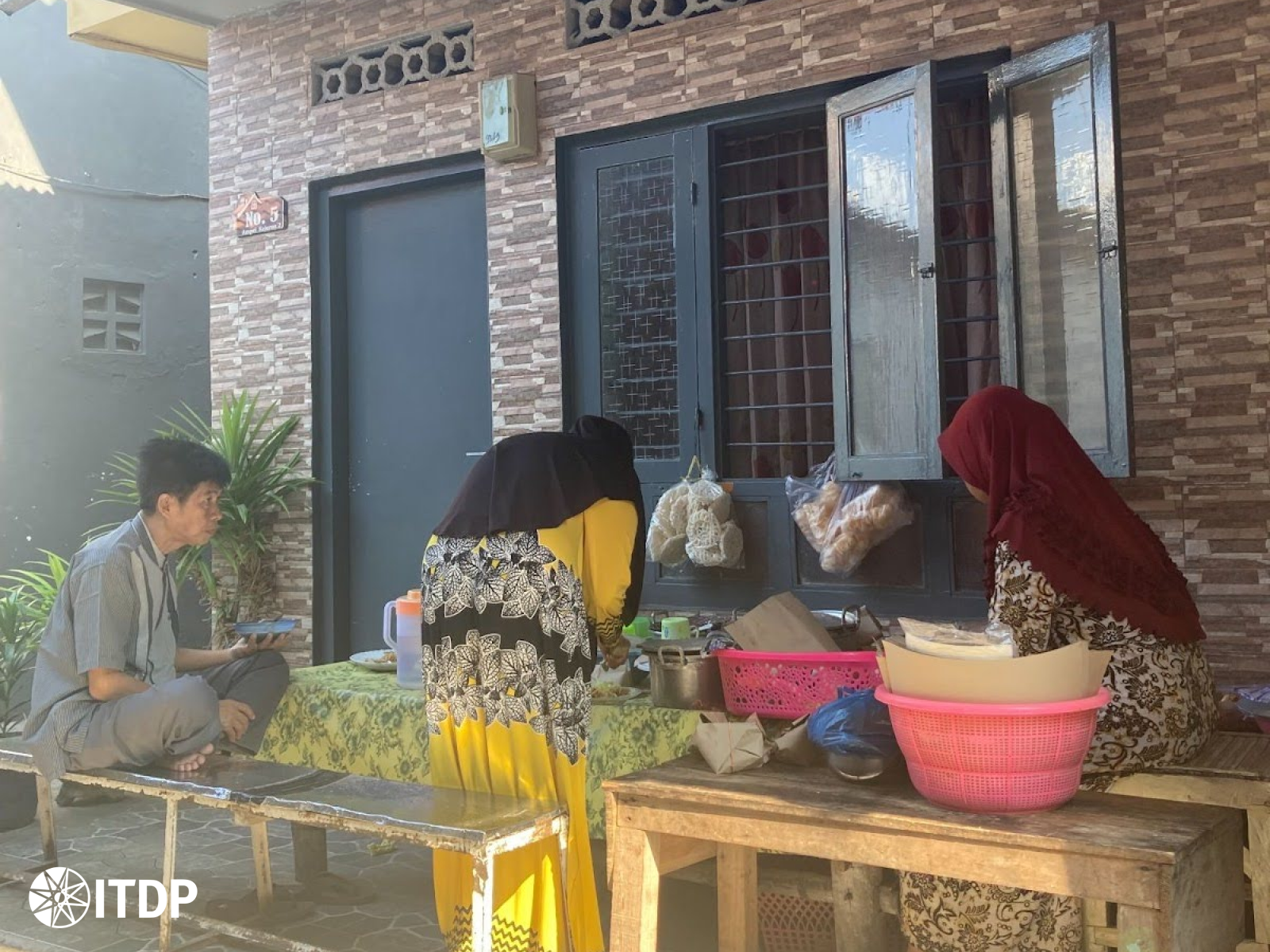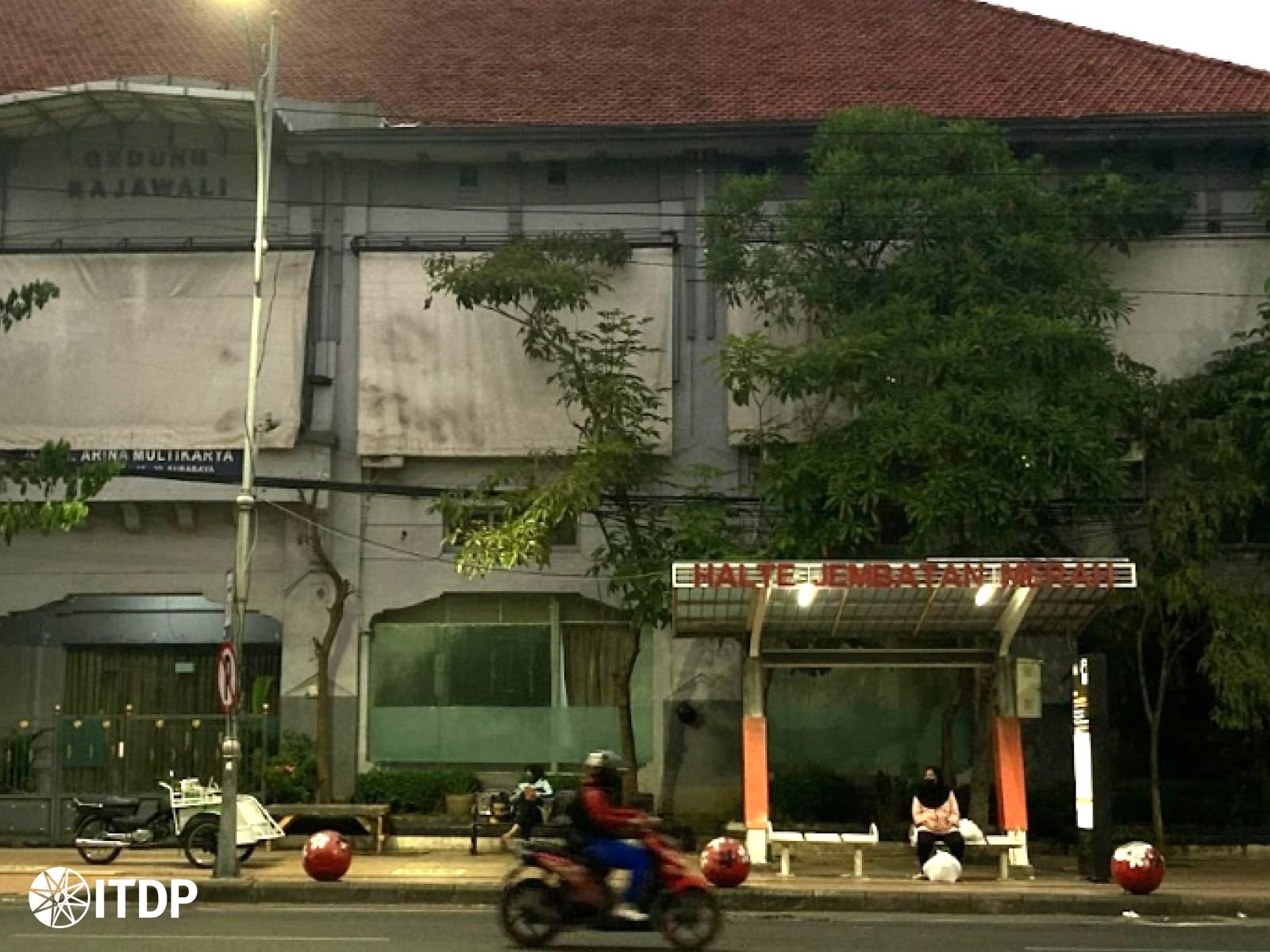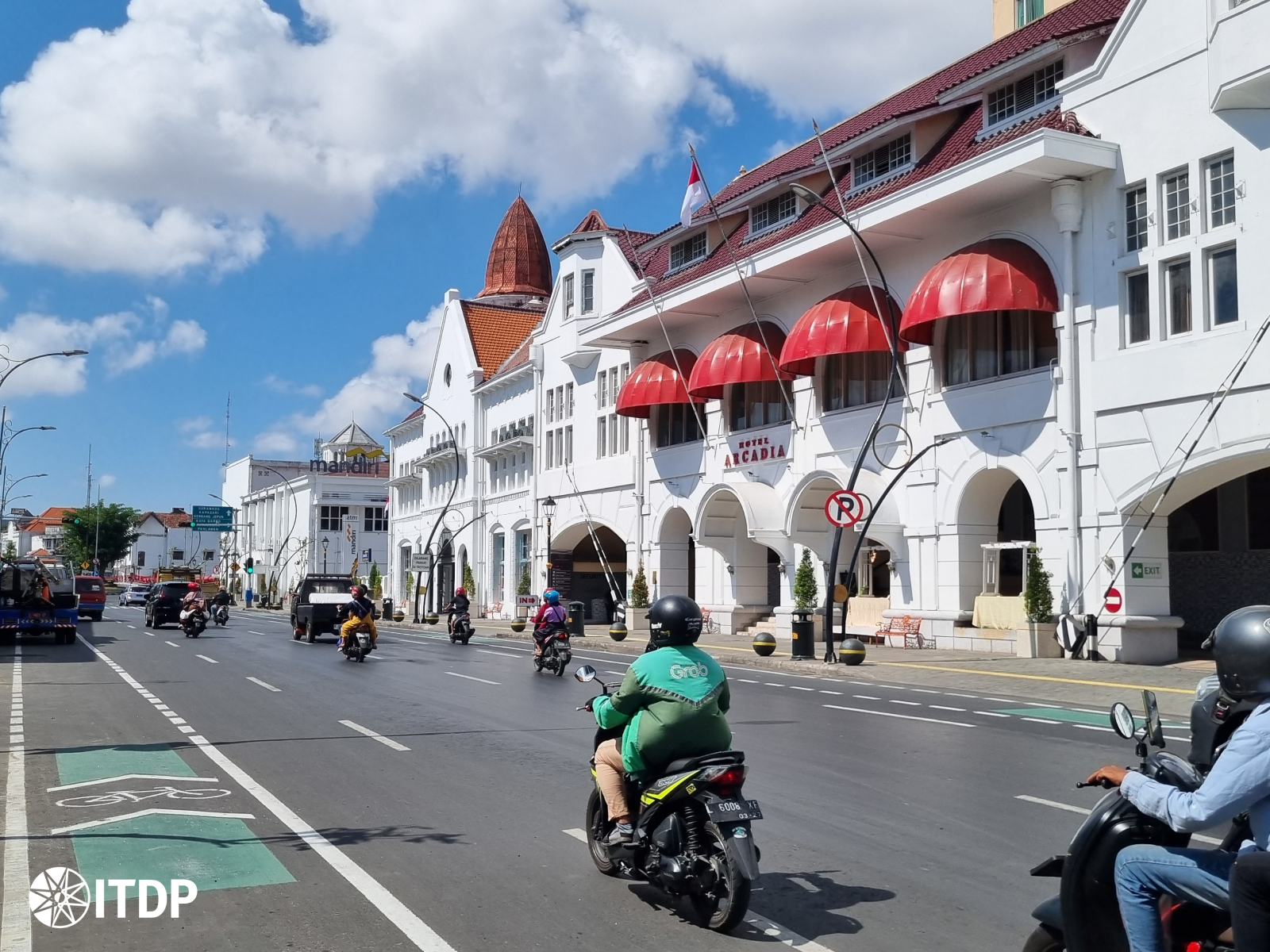September 04, 2024
Sustainable Transport, A Ticket to Developing Tourism Areas
By Ajani Raushanfikra, Urban Planning and Design Assistant ITDP Indonesia
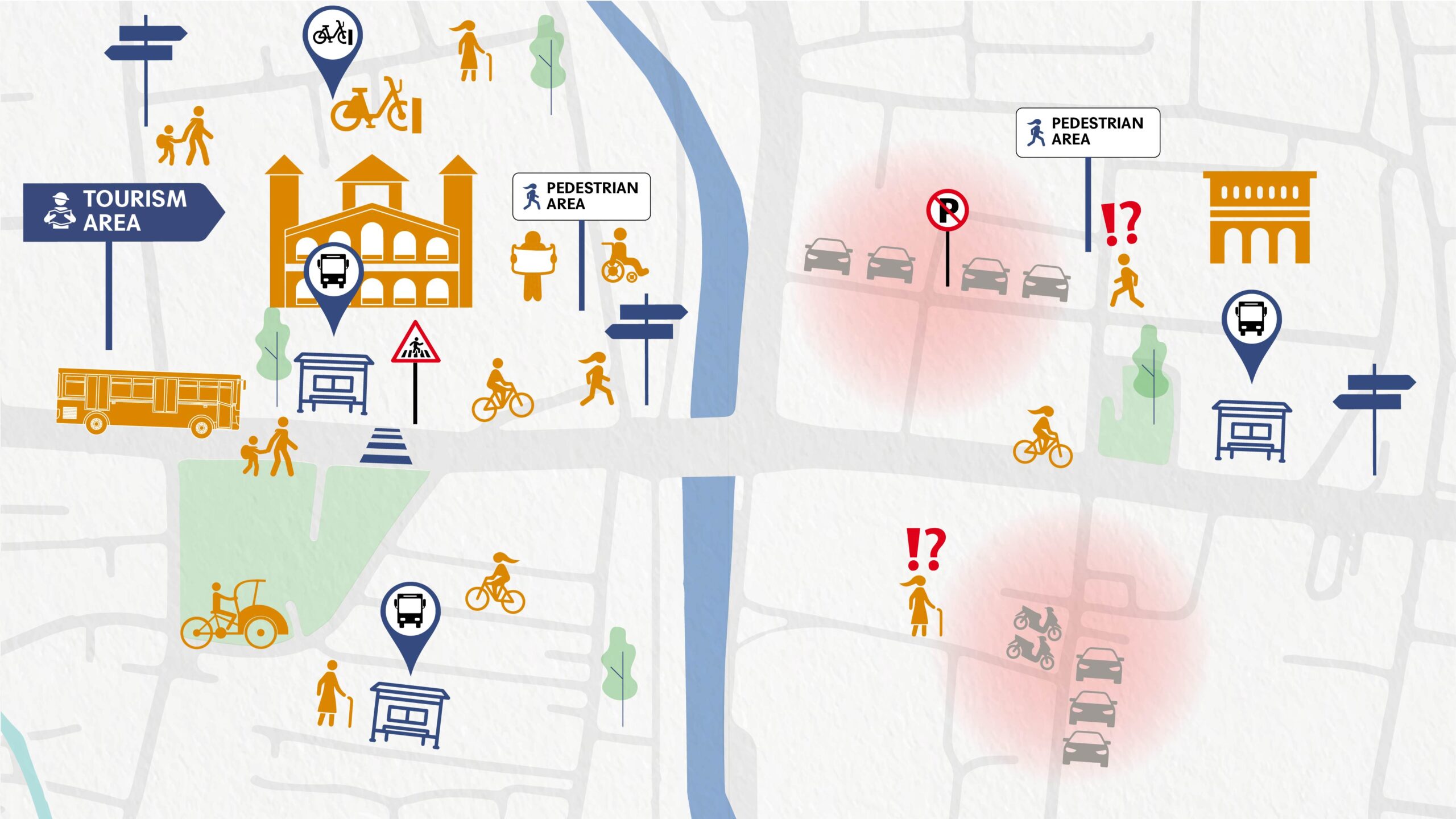
What is the connection between pedestrian, cyclist, and public transport-oriented urban development and the development of tourism areas? The scientific journal titled “Significance of the Public Transport for Tourism Development in Destinations,” published by Deturope (The Central European Journal of Regional Development and Tourism) in 2023, highlights the crucial role of transportation in tourism. The journal asserts that the way people travel is key in tourism, with transportation being one of its core elements.
Traveling is essential in tourism, as it involves moving passengers to their desired destinations (Kalousová & Jarábková, 2015). Research by Orieška (2010) and Šejvlová et al. (2011) emphasize that, apart from tourism management, the most crucial factor in tourism development is the quality of transportation infrastructure (Navrátil et al. 2012, 2013, 2018). Transportation modes in tourism include both private vehicles (such as cars and motorcycles) and public transport. The same journal further points out that public transport is the most suitable mode for tourism areas because it is accessible to everyone, allowing more people to visit and facilitating social interactions through shared use.
Besides public transportation, the 2021 World Bank report “Investing for Momentum in Active Mobility” suggests that focusing on active mobility—such as walking and cycling—also offers social and economic benefits. Mclvenny (2015, cited in World Bank, 2021) finds that walking or cycling is associated with a positive perception of an area. For instance, a survey in a historic area in Istanbul found that 68% of visitors felt more comfortable and 66% spent more time in the area after pedestrianization (Hacer, H. et al., 2016). Active mobility also has a significant economic impact and is increasingly being applied in sustainable tourism.
Tourism Areas Based on Sustainable Transportation
In Surabaya, the Old Town area is a historic district known for its diverse architectural buildings, legendary culinary spots, and historical events. This area has been recognized as a Strategic Socio-Cultural Area in Surabaya’s RPJPD for 2005-2025 and designated as a cultural heritage site by the Surabaya Cultural, Youth, Sports, and Tourism Department (Dinas Kebudayaan, Kepemudaan dan Olahraga serta Pariwisata/Disbudporapar). With its rich historical and cultural heritage, this area holds significant potential as a tourist destination.
To maximize the tourism potential in Surabaya’s Old Town, infrastructure development that caters to pedestrians, cyclists, and public transport is essential. The Surabaya City Government began a revitalization project for the Old Town in 2023, aiming to improve accessibility and enhance its appeal to tourists.
In 2023, ITDP Indonesia had the opportunity to collaborate with the Surabaya City Government on the development of the Old Town area, providing recommendations for planning and construction with a focus on enhancing connectivity through sustainable transportation modes. When visiting the Old Town area, it was identified that promoting the use of public transportation and encouraging continued exploration with non-motorized transport, supported by appropriate facilities and infrastructure, is necessary. Also, non-motorized transport helps reduce pollution, improves air quality, and enhances the area’s overall comfort.
Planning and Development of the Old Town Area
Understanding the perspectives of various stakeholders involved in the development of this area—including residents, visitors, locals who live and work within the area, and expert planners—is key to formulating recommendations for the planning and development of the Old Town area.
During the preparation of the recommendations from May to October 2023, ITDP corresponded with relevant agencies such as the Department of Housing, Settlement Areas, and Land (Dinas Perumahan Rakyat dan Kawasan Permukiman serta Pertanahan/DPRKPP); the Regional Development Planning Agency (Badan Perencanaan Pembangunan Daerah, Penelitian dan Pengembangan/Bappedalitbang); the Department of Transportation (Dinas Perhubungan/Dishub); the Department of Water Resources and Road Management (Dinas Sumber Daya Air dan Bina Marga/DSDABM); and the Cultural, Youth, Sports, and Tourism Department (Dinas Kebudayaan, Kepemudaan dan Olahraga serta Pariwisata/Disbudporapar) of Surabaya. These discussions focused on aligning visions, planning, and actions to ensure cohesive development that meets the needs of the area’s users.
To comprehend the issues and needs of users in the Old Town area, ITDP Indonesia used several approaches. This involved analyzing secondary data, conducting preliminary field surveys, and gathering information through discussions and site visits with local communities. Additionally, surveys and interviews with the Old Town Area visitors were carried out.
Field discussions and visits took place in August 2023, involving three local pedestrian and tourism groups in Surabaya: Oud Soerabaja Hunter, Bersukaria Walk Surabaya, and the Surabaya Pedestrian Coalition (Koalisi Pejalan Kaki). These visits conducted both during the day and at night covered the European Zone, Chinatown Zone, and Ampel-Malay Zone. The team explored pedestrian experiences and potential development opportunities in these areas. Through these visits and surveys, key issues related to pedestrian accessibility, including difficulties with crossings and safe pedestrian pathways, were identified.
Low safety perceptions among pedestrians are primarily due to the dominance of motorized vehicles and high-speed traffic in Surabaya’s Old Town. Additionally, the lack of traffic signal devices in intersections, insufficient lighting and nighttime activity contribute to safety concerns. According to the survey, many visitors rely on private vehicles due to the limited public transportation options available.

Pedicabs are viewed as an ideal development option for this area because they align well with its historic charm and have zero emissions. Previously, the Surabaya City Government introduced a pedicab tour program to enhance tourist exploration of the area. However, interviews with local pedicab operators revealed that many were unaware of the city’s plans to expand this program. Nevertheless, they expressed their willingness to be involved in the program’s future development, not only to transport passengers, but also to act as tour guides and capture visitors’ moments at key attractions in the area.
The Need to Improve Connectivity, Accessibility, and Activities within the Old Town Area
Currently, there are two public transportation options serving the Old Town: the Suroboyo Bus on routes R1/R2 and the Diesel Rail Train stopping at Surabaya Kota Station. Both points are not within comfortable walking distance from all parts of the area. Adding more public transportation modes and stops serving the Old Town could increase visitor numbers and improve connectivity between the Old Town and other areas in Surabaya.
Improving accessibility is a crucial requirement. This includes safe pedestrian facilities on roadways and the addition of safe, comfortable, secure, and inclusive crossing facilities. Interventions to enhance pedestrian safety should be tailored to each road’s characteristics (using a typological approach). Providing comprehensive information systems in the area, including points of interest, public transportation stations, and recommended tourist routes, can also support accessibility. Enhancing connectivity and accessibility in the Old Town can also be achieved by activating or adding activities outside peak hours. Increasing activities in the area, in addition to boosting attraction, can also positively impact visitors’ perceptions of safety when walking or cycling in the area.
A First Step: Synergy Between Area Development with Sustainable Transportation in Surabaya
ITDP’s recommendations titled, “Recommendations for Improving Connectivity and Accessibility in Surabaya’s Old Town Area,” address all identified issues and present six main recommendations. These recommendations focus on enhancing connectivity, accessibility, and activity within the area. The document was submitted to Surabaya City’s Department of Housing, Settlement Areas, and Land (Dinas Perumahan Rakyat dan Kawasan Permukiman serta Pertanahan/DPRKPP) in November 2023. Following this, detailed planning and construction in the Old Town’s European Zone were carried out by the Surabaya City Government from December 2023 to May 2024.
In June 2024, we had the opportunity to attend the launch of the revitalized Old Town Area in Surabaya. We observed that visitors felt more comfortable exploring the area due to improvements in bus stops, pedestrian pathways, roadways, and added crossings. Historical buildings have also been “revived” with information, stories about the area’s history, and better lighting. The Suroboyo Bus fleet passing through the area also dropped off many passengers.
The efforts to enhance accessibility and connectivity in the Old Town are evident. However, there is still much to be done to maximize the area’s potential for sustainability. For instance, developing emission-free public transport routes and utilizing built-up land for various functions. The Old Town marks the beginning of Surabaya’s development. We hope this area continues to ‘thrive’ and become the ‘starting point’ for an integrated area development that synergizes with sustainable transportation development in Surabaya.
Read the document titled “Rekomendasi Peningkatan Konektivitas dan Aksesibilitas Kawasan Kota Lama Surabaya.”
References:
- Samkova L., Navratil J. (2023). Significance of the Public Transport for Tourism Development in Destinations. Deturope The Central European Journal of Regional Development and Tourism.
- World Bank. (2021). Investing for Momentum in Active Mobility.
- Demir H., dkk. (2016). Evaluation Environmental and Social Impacts of Pedestrianization in Urban Historical Areas: Istanbul Historical Peninsula Case Study.




